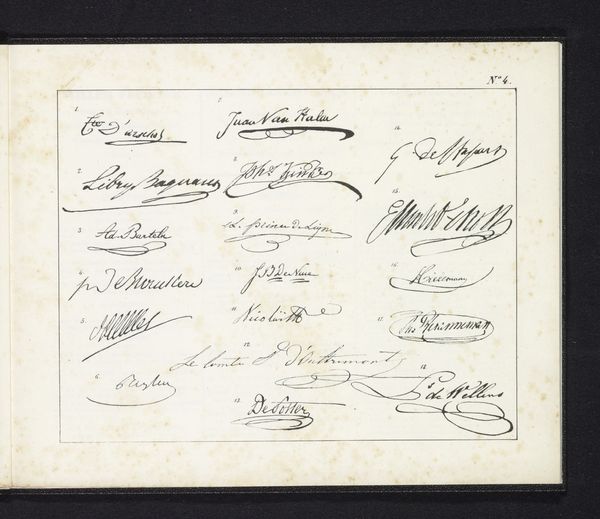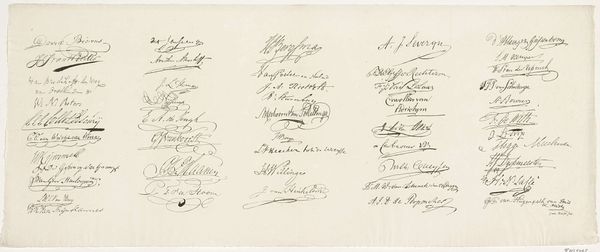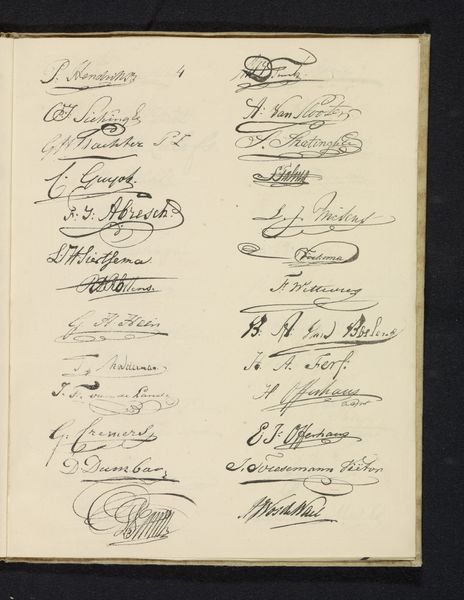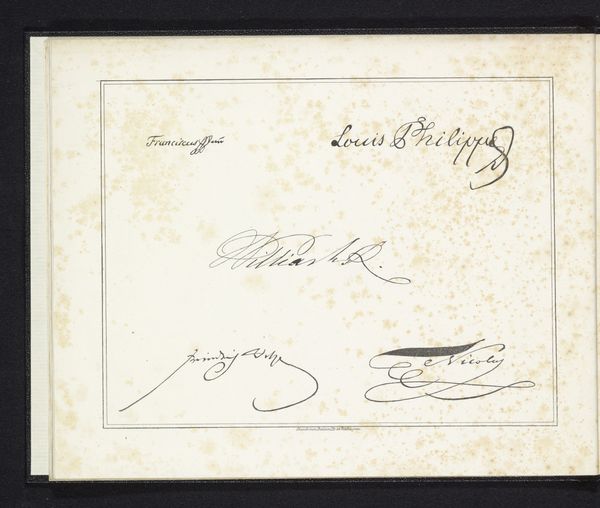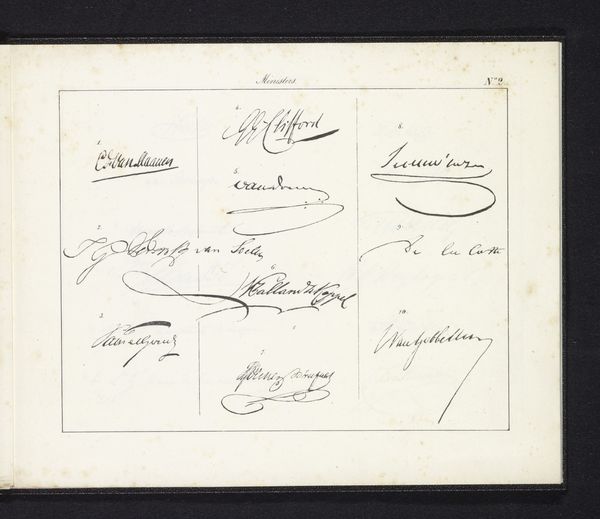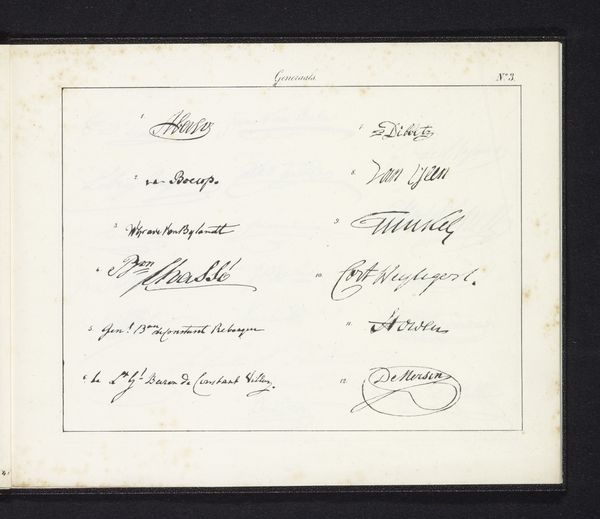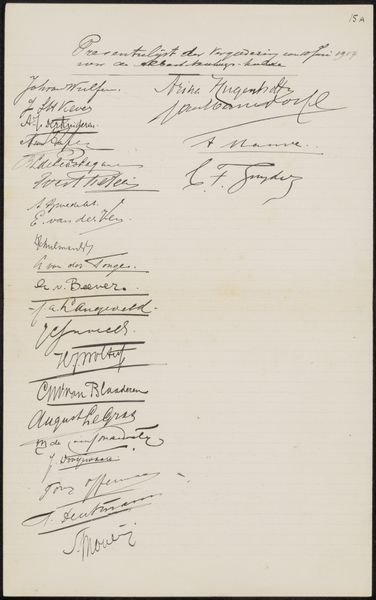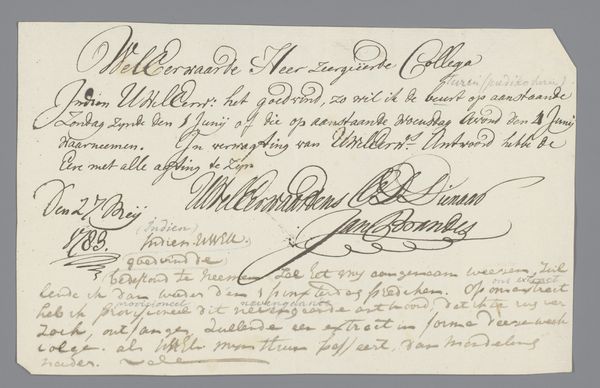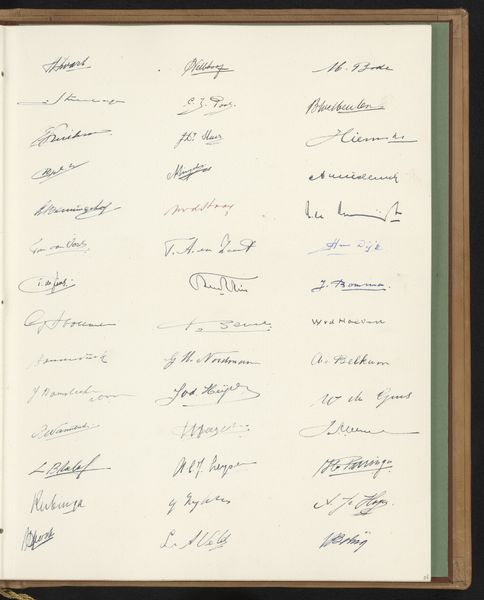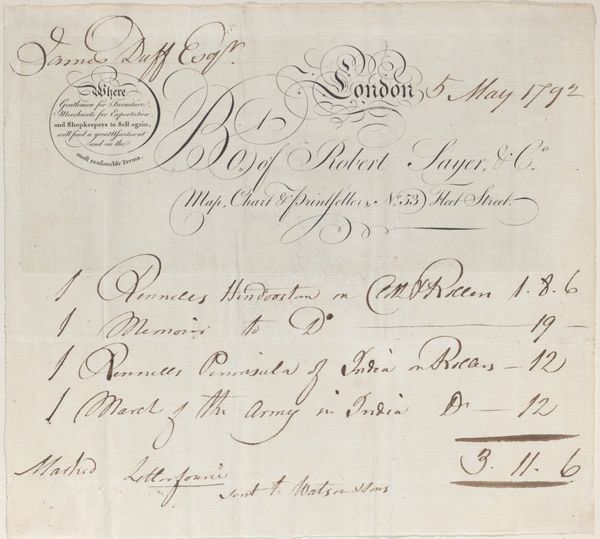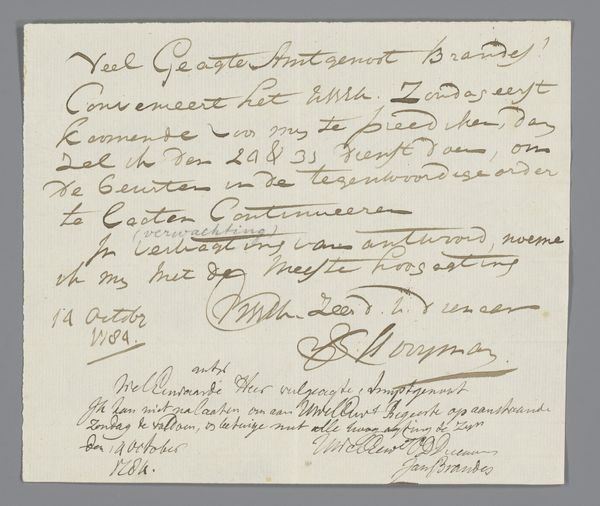
drawing, paper, ink
#
portrait
#
drawing
#
sketch book
#
paper
#
ink
#
history-painting
#
academic-art
Dimensions: height 207 mm, width 257 mm
Copyright: Rijks Museum: Open Domain
Curator: Welcome. Today we are looking at "Handtekeningen van Nederlandse staatsmannen en generaals, 1830", or "Signatures of Dutch Statesmen and Generals, 1830," an ink drawing on paper by an anonymous artist. Editor: Initially, the composition strikes me as quite formal, almost sterile. A grid of calligraphic gestures isolated on the page. A pantheon of signatures frozen in time. Curator: Precisely! Note how the artist has arranged the signatures with a careful attention to negative space. The contrast between the bold ink and the blank paper emphasizes the individual quality of each mark. Semiotically, each signature is a symbol—a representation of power and authority. Editor: Yet, who were these men? To truly understand this, we must consider the historical context of 1830. This was a turbulent time in Dutch history, marked by political upheaval and the Belgian Revolution. The signatures represent individuals complicit in or resistant to colonial rule, the repression and the erasure of colonized people. Curator: It is worth considering that while historical and sociopolitical context certainly matters, it doesn't diminish the artist's arrangement, how they captured individual gesture. Look, for example, at the flourishes, the deliberate loops, and the angles in each signature; each demonstrates a different style. Editor: The "style" speaks volumes about these men: their personalities, pretensions, class. What strikes me are their performances of self within systems of oppression and control. By displaying them in the cold aesthetic of this format, does it implicitly valorize a network of dominance and control, reducing people to abstract icons of that? Curator: Your interpretation casts a compelling, and urgent light, but that shouldn't dismiss the fundamental formalism of how these figures and their penmanship come to function on the page. Editor: Agreed. I believe our understanding should engage in both contexts, acknowledging formal artistry alongside any uncomfortable colonial undertones, bringing attention to this complex conversation.
Comments
No comments
Be the first to comment and join the conversation on the ultimate creative platform.
